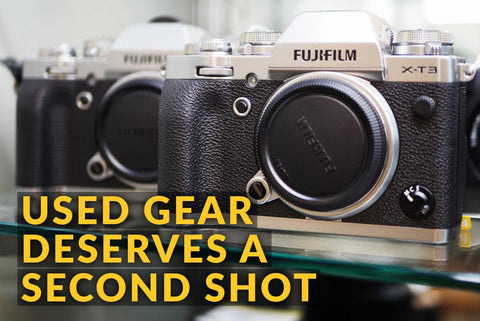DSLR Cameras
The DSLR camera uses a digital version of the single-lens reflex idea, where light passes through the lens and "reflects" (thus, reflex) onto a mirror to a pentaprism (or pentamirror) so that the photographer can see the image they will capture through a viewfinder. When we press the shutter button to capture an image, this mirror flips up to impress the image upon the camera's sensor, thus capturing the photo.
DSLRs Advantages
- Higher Image Quality with more clarity
- Larger Selection of Lenses
- Better auto-focus for fast-action photography
- Longer Battery Life
- Connects easily to smartphones for quick sharing
-
The optical viewfinder allows you to see exactly what your lens sees
which gives you a sharper look at the scene.
Mirrorless Cameras
Mirrorless cameras are different from traditional DSLR (digital single-lens reflex) cameras in that they don't have the mirror to reflect light up onto a pentaprism or pentamirror to aid in the photographer being able to see the image through a viewfinder. Instead, mirrorless cameras use the image sensor itself to focus and quickly display the image on the rear digital screen (or, in some mirrorless cameras, through an electronic viewfinder).
Mirrorless Advantages
- Smaller in size and weight
- On average, better video capabilities
- Quiet shutter
- Faster continuous speed shooting
- Connects easily to smartphones for quick sharing
-
The electronic viewfinder allows you to see exactly what the sensor sees,
such as a live view of your exposure settings.
Digital Compacts - a.k.a. Point and Shoot Cameras
Point and shoot cameras are a great option for photographers who want a pocket-sized camera that is a bit more rugged, with more zoom power than a typical smartphone. Depending on your needs, some point and shoot cameras offer a variety of advantages such as waterproof features, long zoom lenses, and larger sensor sizes to capture fine details a smartphone may miss.
Sensors and Why Size Does Matter
A camera’s sensor plays a major roll in the quality of the image an individual camera can make. Each sensor has light-sensitive photosites that capture the image. The larger the sensor, the more information it can record which creates more detailed and dynamic photographs.
Micro - Four-Thirds System ( Mirrorless )
This sensor is developed for both Olympus and Panasonic mirrorless cameras and has a 4:3 image ratio, but it can also record 1:1, 3:2, and 16:9 formats.
APS - C Sensor Otherwise Known as Crop Sensor ( Mirrorless + DSLR )
This sensor is the most commonly found in both DSLRs and Mirrorless cameras due to its versatility. The sensor has a 3:2 image ratio and offers great image quality and is compatible with a large range of lenses. The size of the actual sensor does vary depending on the manufacturer.
Full - Frame ( Mirrorless + DSLR)
Otherwise known as the 35mm Full-Frame Sensor, it has a 3:2 image ratio like the APS-C sensor but is 2.5 times larger than it’s counterpart. The pixels tend to be larger in full-frame sensors which allow for better images in low light situations.





